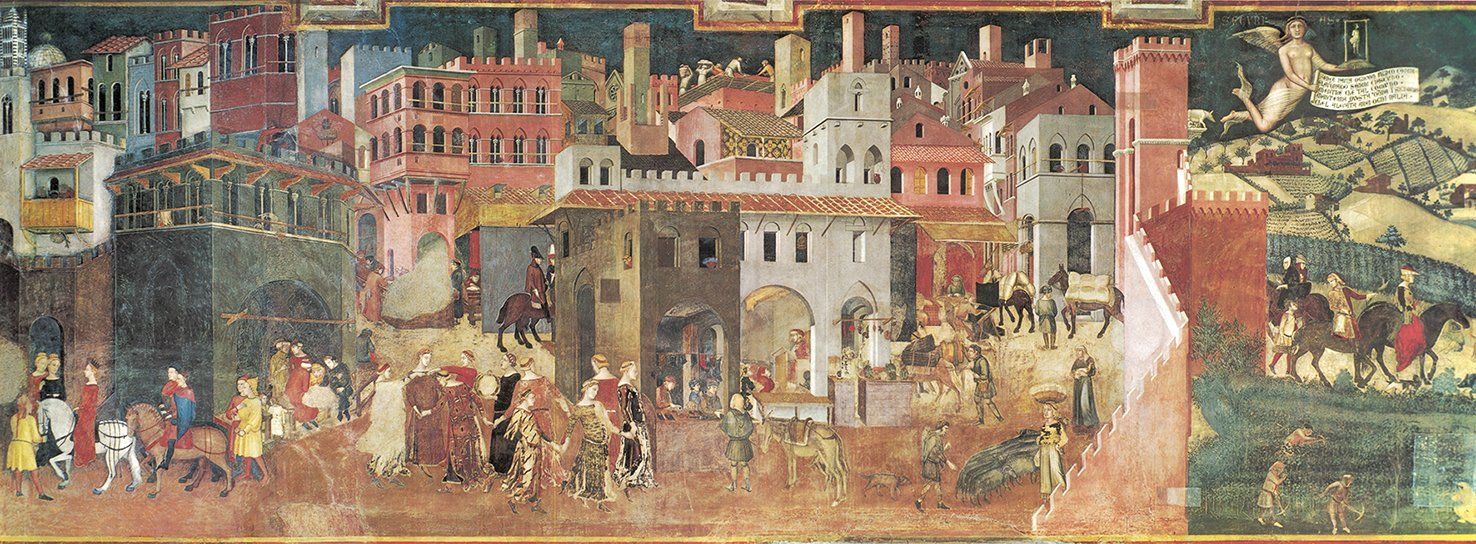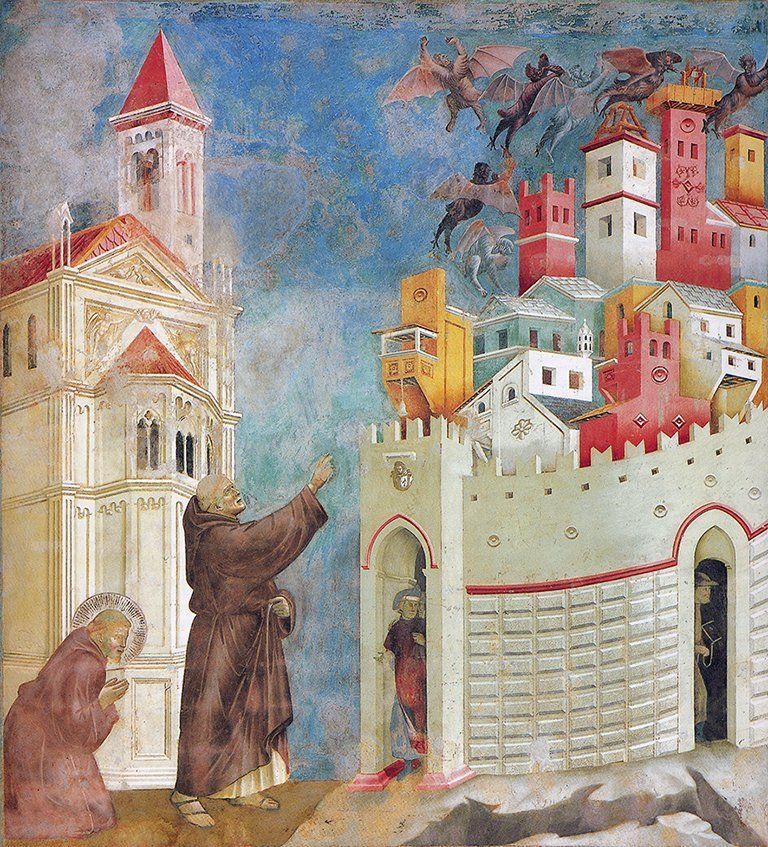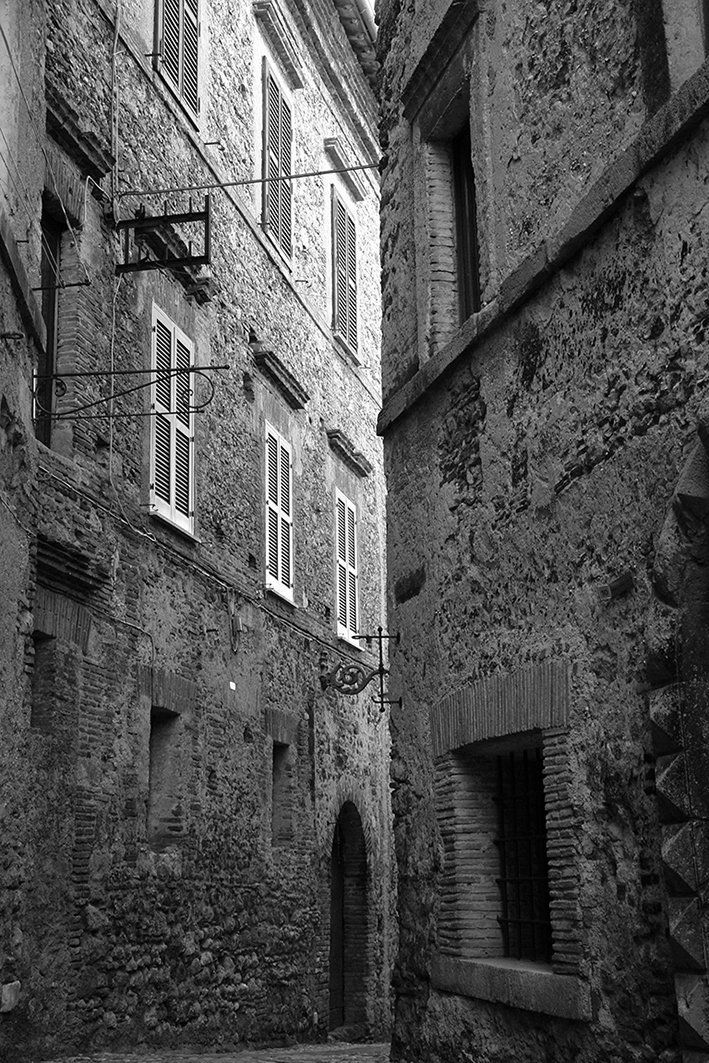GIOTTO'S COLOURS. Colour plan for the historical hamlet of Castelnuovo di Farfa inspired by Giotto's Exorcism of the Demons at Arezzo.
An expressive, evocative
and allusive
strategy for the colour plans of Italy's smaller historic towns and internal areas
"Giotto's Colours" is an experimental colour plan for the medieval hamlet of Castelnuovo di Farfa, based on Giotto's fresco Exorcism of the Demons at Arezzo.
For our current collective imagination, the typical Italian historic centre is characterized by exposed masonry, devoid of plaster and colour. It is now well established that this view is not rooted in historical reality, but rather originates from relatively recent Romantic ideas.
For some historic buildings it is possible, thanks to archival sources or stratigraphic investigations, to ascertain at least one of the lost colours.
As far as the repainting of the facades of the so-called minor historic centres is concerned, however, since these have been the first and easiest target of the decline of the culture of maintenance in the modern world, there are no elements for preparing a true philological reintegration. This operational vagueness affects most of the territories of the Italian provinces where the largest part of the national historic building heritage is located. Therefore, at present, when a citizen restores the façade of his property, the Romantic taste of the exposed masonry or that of the so-called "neutral" colour may prevail.

An experimental approach: masterpieces of Italian painting as models for the image of vernacular architecture
A different solution was proposed for Castelnuovo di Farfa: taking inspiration from the colours of the towns and architectures of a masterpiece of the Italian pictorial tradition to construct a reference range, a palette of natural colours, from which the citizens of Castelnuovo would be free to choose according to their own desires. This plan has no prescrictive character, it presupposes implementation over time, and is a real expression of self-construction, in continuity with the processes that have shaped Italy's historic centres over the centuries.
"Giotto's Colours" is an anomalous planning tool: evocative, allusive, undefined, but at the same time built on a rigorous historical approach.
The historic pictorial heritage has been preserved without going through the upheavals induced by the decline of the culture of maintenance, and constitutes the closest visual reference to the original colours of Italian towns and lanscapes.
A work by Giotto, the main illustrator of the life of St. Francis and of his stay in the Sacred Valley of Rieti, which borders on the Farfa Valley was chosen for Castelnuovo di Farfa. The experimental model of "Giotto's Colours" could be extended to different Italian territories, taking the time to find, each time, a pictorial image close to the local visual culture of the original settlement.











